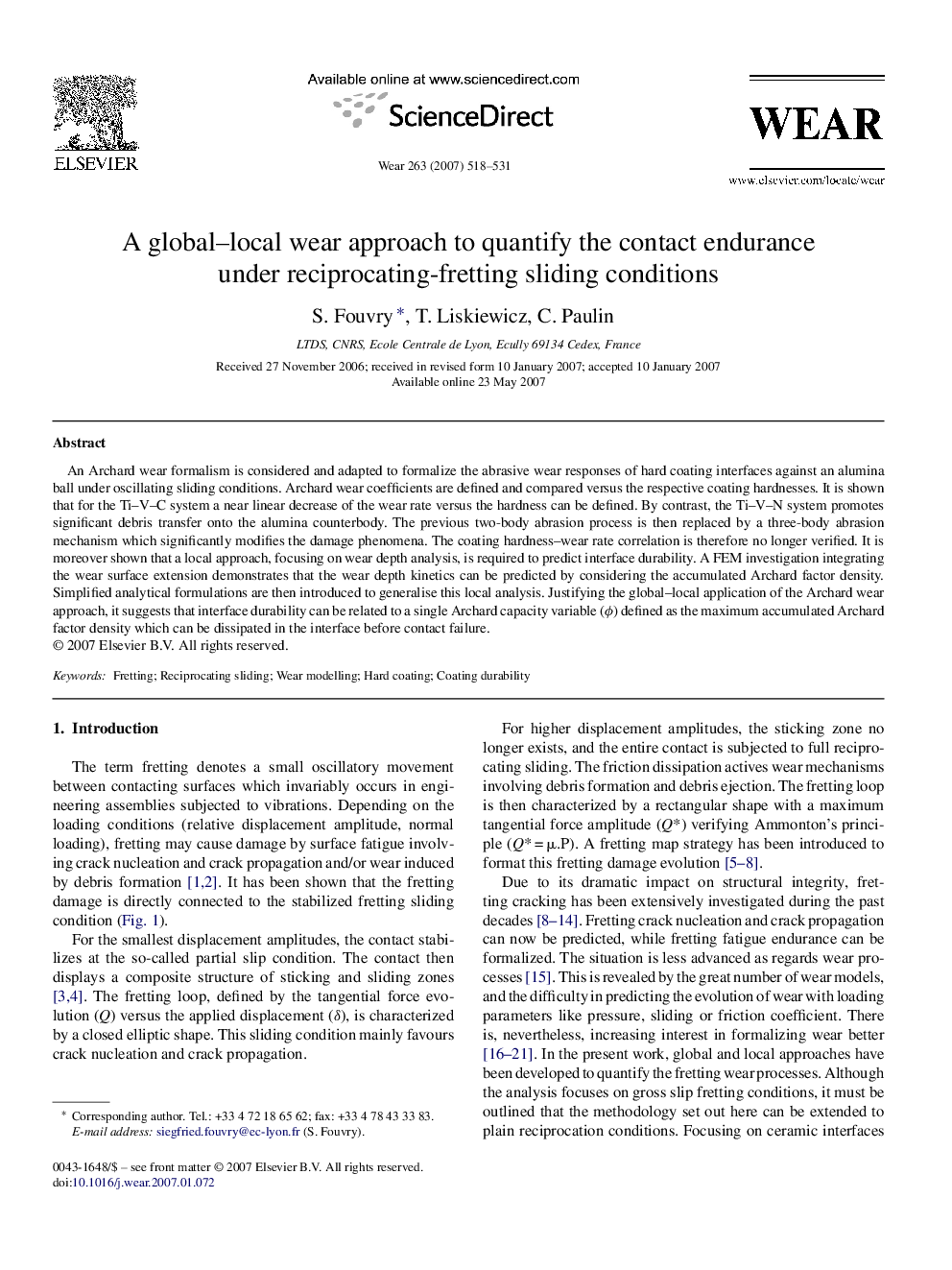| Article ID | Journal | Published Year | Pages | File Type |
|---|---|---|---|---|
| 619855 | Wear | 2007 | 14 Pages |
Abstract
An Archard wear formalism is considered and adapted to formalize the abrasive wear responses of hard coating interfaces against an alumina ball under oscillating sliding conditions. Archard wear coefficients are defined and compared versus the respective coating hardnesses. It is shown that for the Ti-V-C system a near linear decrease of the wear rate versus the hardness can be defined. By contrast, the Ti-V-N system promotes significant debris transfer onto the alumina counterbody. The previous two-body abrasion process is then replaced by a three-body abrasion mechanism which significantly modifies the damage phenomena. The coating hardness-wear rate correlation is therefore no longer verified. It is moreover shown that a local approach, focusing on wear depth analysis, is required to predict interface durability. A FEM investigation integrating the wear surface extension demonstrates that the wear depth kinetics can be predicted by considering the accumulated Archard factor density. Simplified analytical formulations are then introduced to generalise this local analysis. Justifying the global-local application of the Archard wear approach, it suggests that interface durability can be related to a single Archard capacity variable (Ï) defined as the maximum accumulated Archard factor density which can be dissipated in the interface before contact failure.
Related Topics
Physical Sciences and Engineering
Chemical Engineering
Colloid and Surface Chemistry
Authors
S. Fouvry, T. Liskiewicz, C. Paulin,
